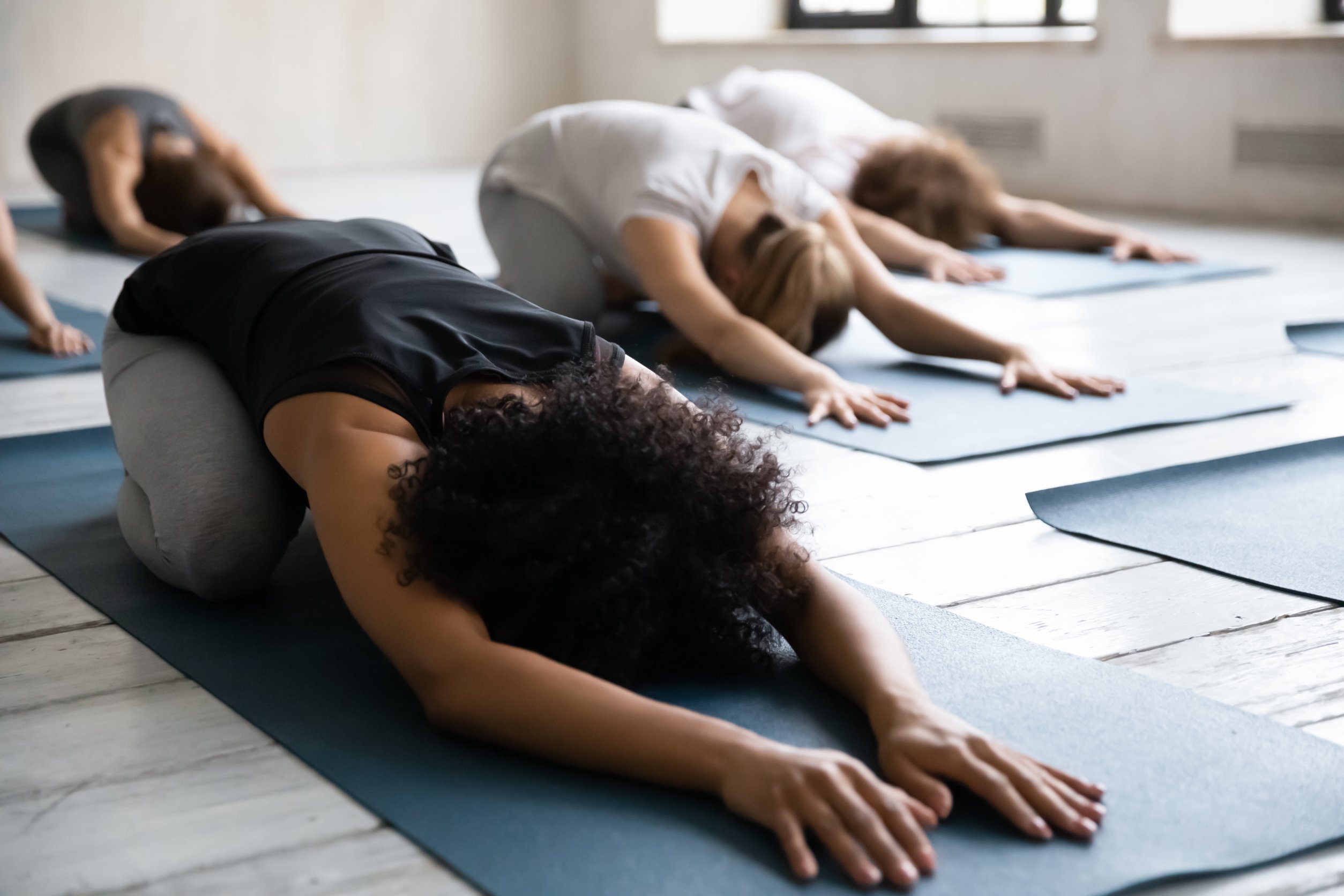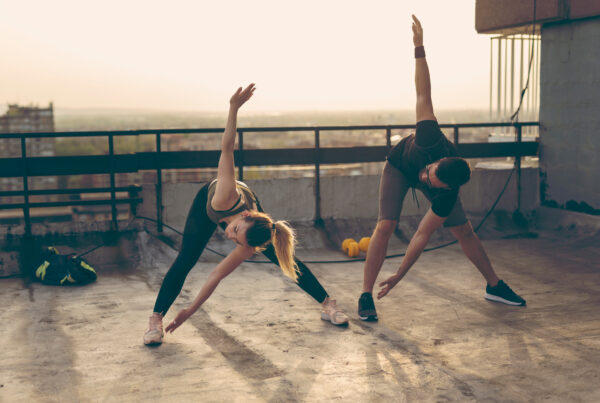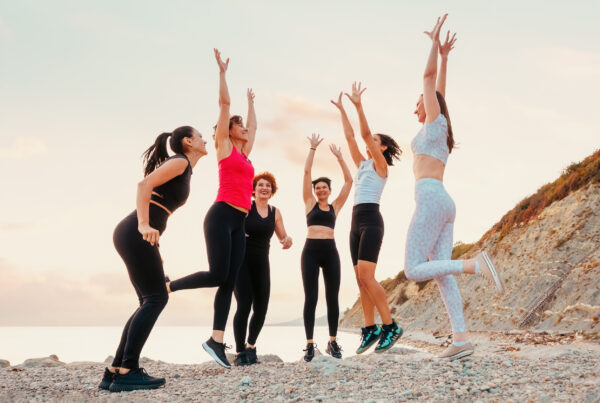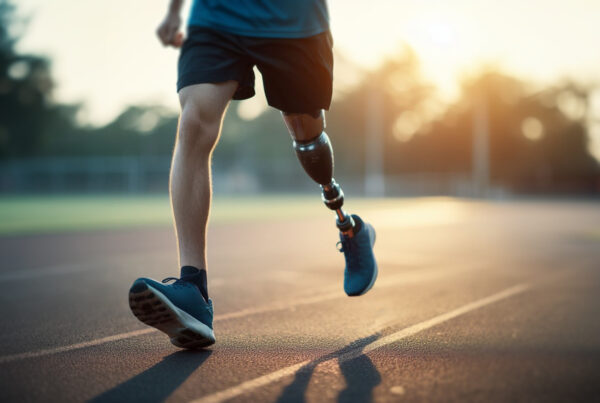”Q: Are there exercises that I can do to boost my health and fitness?
Reading time: 5 Minutes
MWi Hack:
- Learn stretches to keep the major joints of your body flexible.
MWi Summary:
- Mobility is how well your joints move through their own range of motion.
- Here are a few exercises you can do to improve your mobility:
- Child’s pose to downward-facing dog
- Frog pose to deep squat
- Hitchhiker
- Hip circles
Mobility refers to the way your joints move inside their socket. “Mobility is the ability to move your joints freely with the surrounding tissues allowing the movement to happen smoothly,” says Denise Cervantes, an ACSM-certified sports performance and fitness specialist based in San Bernardino, California.
Think, for instance, the way the shoulder moves when you’re doing an arm windmill or arm circle.
It’s related but not synonymous with flexibility. Flexibility refers to the ability to lengthen or hold a muscle in a stretch. Mobility refers to the range of motion of your joints.
Exercises to improve mobility tend to be more dynamic than exercises to improve flexibility, Cervantes says. Yet working on both can lead to some of the same benefits.
“If you don’t have flexibility or mobility, in time, it can get harder to do simple things like getting in and out of your car, bending down to put on your shoes, or reaching up to get something out of a cupboard,” Cervantes says. And it could do training and exercise more difficult.
Take, for instance, mobility in your hips and thoracic spine. If you keep these body parts immobile too much, you may develop injuries simply due to repetitive daily behaviors, namely from excessive sitting and device use. Without attention, those habits cause kyphosis, an exaggerated rounding of the back, Cervantes says.
Immobility can also lead to poor walking mechanics. “Because of so much sitting, the hip flexors become so tight that they’re unable to open so when you walk, you’re only able to use a shortened stride,” she says. You’re then more likely to shuffle your feet as you walk when you age, your body hunched over.
The good news is that simple exercises, when practiced regularly, can help prevent these issues now and slow some of the related natural issues that happen with age.
Even better? You’re never too young — or old — to start. “At all points of your life, mobility training should be part of your strength training program,” says Prentiss Rhodes, CSCS, a NASM-certified personal trainer and master instructor based in Scottsdale, Arizona.
7 Exercises to Help You Get More Mobile While there’s no specific guideline for how often you should do mobility exercises, the more you do, generally the more you’ll benefit.
Cervantes recommends doing mobility exercises daily. “The older you are, or the more sedentary you are, usually the more mobility work you need to do,” she says, adding that she likes to do a short mobility workout with multiple exercises before any workout she does. Or you can do them in small doses throughout the day. Most important is doing them regularly so that you maintain and improve that mobility, Cervantes says.
Here are seven exercises you can try that help with mobility for your major and most-used joints:
1. Child’s Pose to Downward-Facing Dog
Kneel on the floor and lower hips toward your heels, Cervantes says. Now let the torso fall over your knees, and your head falls between your arms as you reach your arms forward onto the floor. This is Child’s pose. Hold for a few deep breaths.
Then come into Tabletop position, shifting weight forward until shoulders are over wrists, hips over knees. Flip toes under and pushing feet through floor, extend arms so hips lift, chest pushes through arms, and legs straighten. (Your body will form a triangle with the ground.) Lengthening through torso, take a few deep breaths and slowly release knees to floor, untucking toes and moving back into Child’s pose.
Repeat three times total, taking three to four deep breaths per move, Cervantes says.
2. Frog Pose to Deep Squat
Stand with feet slightly wider than shoulders, toes turned out for this exercise, Rhodes says. Sit back to lower body until thighs are parallel to floor (or as close as you can get to parallel). Hold here a second before shifting weight forward and placing hands on floor in front of you. Spread knees farther apart, as you lower yourself toward the ground, bring chest to the floor if possible. (Support yourself as needed with your arms if stretch in the inner thighs and groin is too intense.) Hold for a second before pushing back to that deep squat with toes turned out. Moving slowly, stand.
Repeat 8 to 12 times, Rhodes says.
3. Chest and Shoulder Opener
Lie face up on floor with dumbbell or kettlebell in right hand (or use a soup can if you don’t have strength equipment or find the weights too heavy), Rhodes says. Extend right arm straight above chest and left arm overhead resting on the floor by ear. Bend right leg, placing right foot on floor next to left knee. Roll onto left shoulder, letting right knee fall to floor. Now extend right leg onto floor and slowly roll hips forward and then back to the position with your right knee bent and arm still extended overhead.
Repeat 8 to 12 times, Rhodes says; then carefully roll onto back, hold weight into chest to give arms a break, and switch sides, repeating on other side.
4. Hitchhiker
Get on floor on hands and knees in Tabletop position, wrists below shoulders and knees below hips, Rhodes says. Form right hand into fist, thumb pointing up in Hitchhiker position, and lift right arm in front of you to shoulder height. Lower to start and repeat 8 to 12 times.
Switch sides and repeat.
5. Hamstring and Hip Opener
Kneel on floor with knees about hip-width apart. Step right foot forward so right knee is over right ankle and right thigh is parallel with floor. With arms to sides or hands on hips, shift weight back as you lean from hips over right foot allowing right toes to come up. (If you need some balance, place hands on floor.) Release to start and repeat 8 to 12 times, Rhodes says.
Switch sides and repeat.
6. Arm and Shoulder Circles
Stand with feet shoulder-width apart, hips and shoulders square to start this exercise from Cervantes. Relax left arm by left side as you circle right arm forward 10 times; extend your arm as long as possible to make large circles without shifting hips. Switch directions for another 10 repetitions. Switch sides and repeat.
7. Hip Circles
Lie face up on floor with legs extended on floor, Cervantes says. Bend right knee and bring it toward chest so knee is pointing toward ceiling. Draw circles — make them progressively bigger — with that knee in one direction 20 times; switch directions and repeat. Then switch sides and repeat, Cervantes says.






